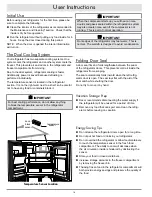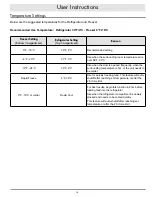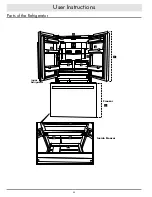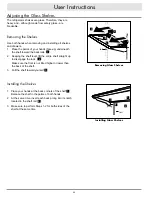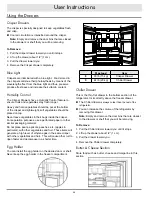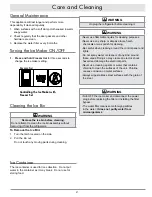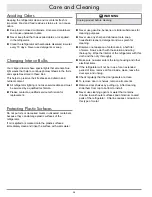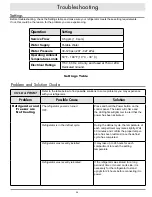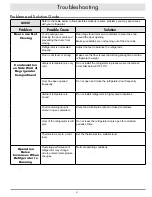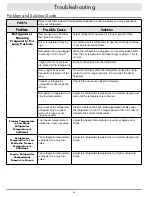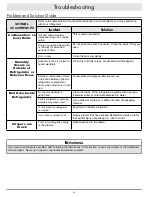
20
User Instructions
Storing Food In Refrigerator
Wrap food or place in a covered container.
Hot food and beverages must be cooled to room
temperature before placing them in the refrigerator.
Freezing Fresh Food
Food should be fresh and in good quality prior to
freezing.
Divide food into portions based on individual
consumption or family meal needs.
Pack food airtight to prevent drying, even if storage is
for a short time.
The best freezer materials are tear-proof and resistant
to cold, humidity, odor, oils and acids.
After thawing, frozen foods should be consumed
immediately and never re-frozen.
Do not freeze bulky quantities of food. Quality is best
preserved when frozen through to the core as quickly as
possible.
Warm foods placed in the freezer compartment cause
the cooling system to operate continuously until the food
is frozen solid.
Recommendations For Preserving
Frozen Food
Purchased frozen food should be stored in accordance
with the frozen food manufactuer's instructions.
Note the following to ensure the good quality achieved
by the frozen food manufacturer and retailer is
maintained:
1. Place the frozen food package in the freezer as
quickly as possible after purchase.
2. Make sure the contents of the package are labelled
and dated.
3. Verify that the "Use By" and "Best Before" dates on
the package are not exceeded.
Food Placement
Freezer
Compartment Bins
Various frozen foods, such as meat, fish,
ice cream, vegetables, etc.
Egg Holder
Eggs
Refrigerator
Compartment
Shelves
Food in pans, covered plates and closed
containers.
Refrigerator
Compatment Door
Bins
Small and packaged foods or beverages
(such as milk, fruit juice, beer, etc.)
Crisper
Vegetables and fruits.
Fresh Zone
Compartment
Delicatessen products (cheese, butter,
salami, etc.)













